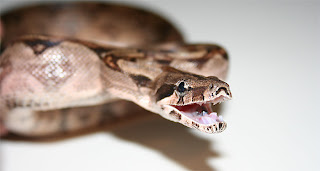With a heat wave upon us it is vital to ensure that any animal will not be effected. I heard a sad story last week about someone loosing his reptiles because their enclosures were too warm. This made me sad because with the right equipment and proper care the loss could have been prevented.
Temperature regulation in a heated enclosure is highly important and I can't recommend enough how important it is to use a thermostat or pulse stat. All reptile keepers should have one as it is a necessity and vital to the animal's well being. I use MicroClimate stats (ministat 100 mat stat and B2 pulse stat) for my reptiles. This ensures my heat mats do not exceed the temperature that is required. As far as I am aware, mat stats can be used for bulbs. Do not use pulse stats as these can blow the bulb. Alternatively to using a stat, you can put your bulb on a dimmer and lower the heat, and this can be used along with a mat stat if needed. However I recommend using a stat at all times.
- A mat stat is a thermostat that provides constant heat, although when reaching a certain point will turn off for a short period of time. They are the most common thermostat for first time owners and are not as expensive however they are not as accurate.
- A pulse stat is a type of thermostat that provides bursts of heat when needed. They are more accurate than mat stats and are popular with racks or for heating multiple reptiles assuming they need the same temperatures or thereabouts.
I would also recommend purchasing a digital thermometer and placing them in side the tank, one on the hot side and one on the cool side although these are not always accurate. Alternatively if you are more fussy, invest in a temperature gun. These measure an exact spot and are more precise.
Always look for signs that your reptiles are overheated. For example spending lots of time in the water bowl when not in shed, about to lay eggs or have mites. Signs of a reptiles being over heated include, dehydration, skin abnormalities, lethargic, spending all their time in the cool side and soaking for long periods in the water bowl.
When temperatures reach 36°C this is when you should turn off your heat source and allow it to cool down. Also always ensure that you have not placed your reptiles in direct sun as this will increase the heat. Always remember that when keeping reptiles that its better to have them slightly too cold as reptiles can survive for longer when it is cooler. Too much heat is more dangerous and can kill a reptile within minutes.
Click here for information on heating
When temperatures reach 36°C this is when you should turn off your heat source and allow it to cool down. Also always ensure that you have not placed your reptiles in direct sun as this will increase the heat. Always remember that when keeping reptiles that its better to have them slightly too cold as reptiles can survive for longer when it is cooler. Too much heat is more dangerous and can kill a reptile within minutes.
Click here for information on heating
















